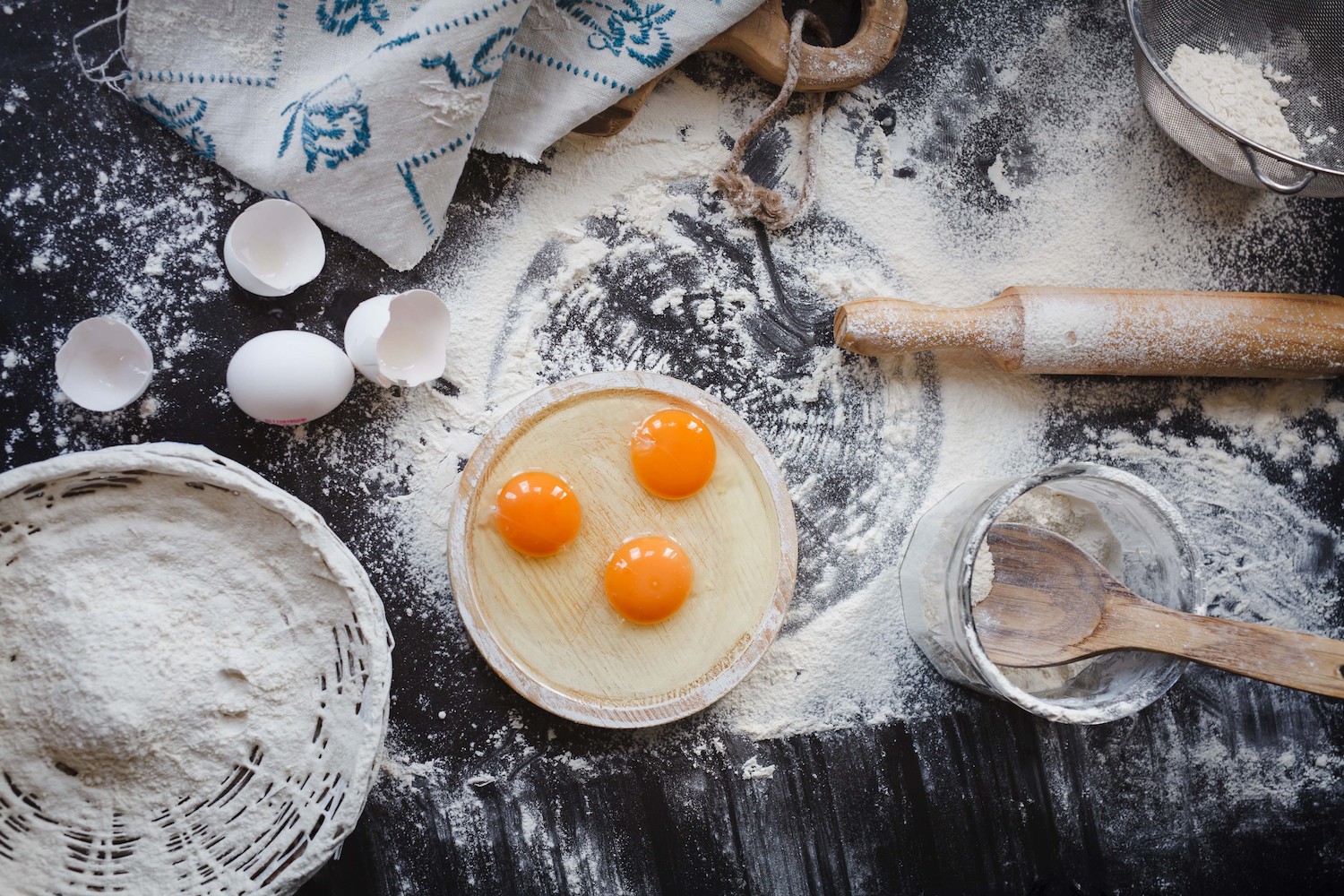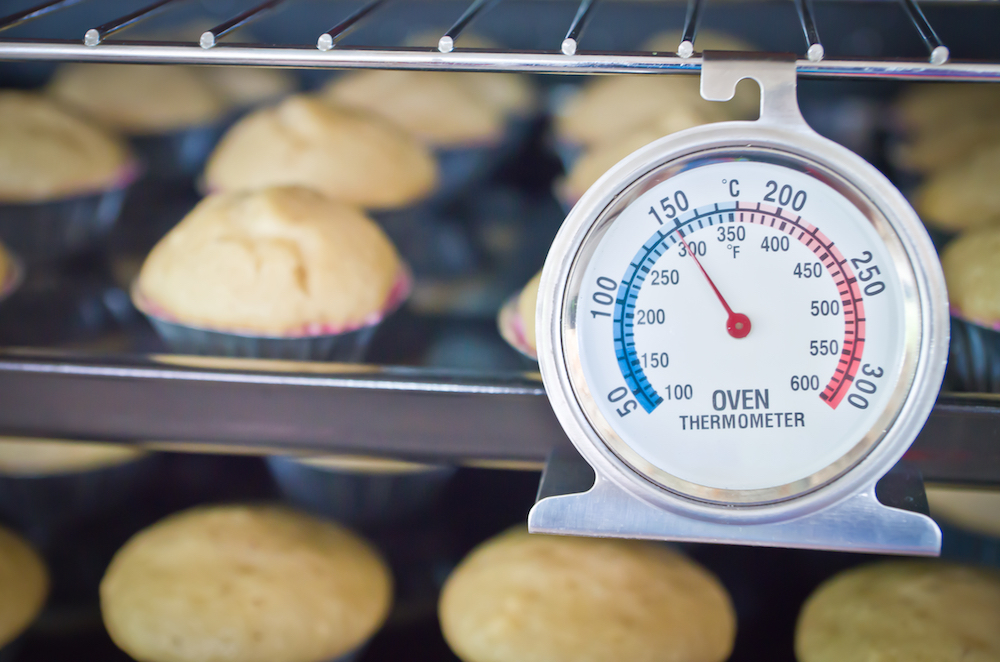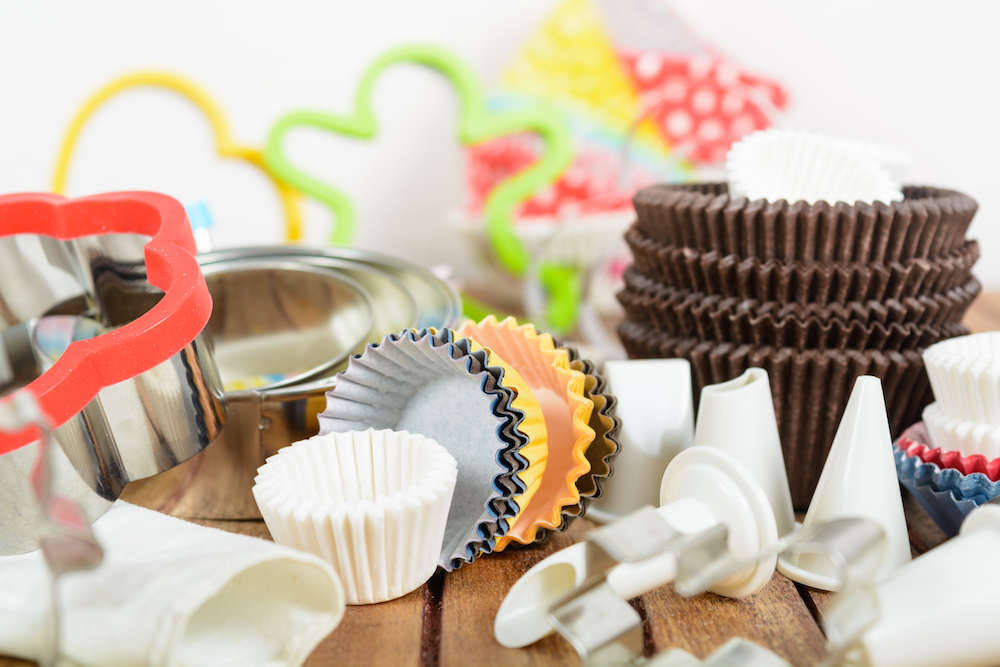Whenever we’re invited somewhere for a Shabbos meal, I always ask what I can bring. I will NEVER show up somewhere empty handed, and I’d prefer to contribute something helpful that lessens my hostess’s cooking load rather than another bottle of wine or box of candy.
Sometimes, the answer is “we’re good, just bring yourselves,” so I go out and buy my bottle of wine or box of candy. But often I get responses like “It would be crazy not to ask you to bring dessert or bake challah.” Other times it’s, “will you bring dessert? I’m not a baker, and there’s no way I’m serving you something I made.”
While I don’t ever mind bringing the dessert (and have come to expect that, when I offer, 9 times out of 10 that’s what I’ll be contributing), that last sentiment bothers me nonetheless. I hate when people think that they can’t bake for me simply because I’m a “baker,” or that I’m sitting at their Shabbos table judging their skills and technique (I’m not).
The truth is, baking isn’t hard! People seem to be scared of it because it’s more technical and scientific than cooking. It’s true; you can’t just throw in a pinch of this and a dash of that, and come up with something magnificent. Cooking does afford you that luxury quite a bit more than baking does. But I truly believe, EVERYONE can be a successful baker if they just follow a few basic rules of baking and avoid these commonly made mistakes!
1. Not following the recipe correctly/reading carefully:
I think this is one of the most common baking mistakes. My mom always taught me to read through a recipe in its entirety before beginning. Baking is a science. The measurements written in the recipe are important. Using too much or too little can affect the chemistry—and therefore the outcome—of your recipe.
Additionally, the recipe is written the way it’s written for a reason. The order in which ingredients are added—and even prepared—makes a difference. For example, “a ½ cup of pecans, chopped” is different than “a ½ cup of chopped pecans.” How you ask? Well, in the first, you are measuring whole pecans first and then chopping them whereas in the second you are measuring them out once they are already chopped. You’ll end up with significantly more chopped pecans using the second measurement than you will with the first.

When adding your ingredients, it is also important to follow the order in which they’re written. If a recipe tells you to cream the butter and sugar and then add the eggs one at a time, incorporating the egg after each addition, that matters for the chemistry of your batter. Adding the ingredients in a different order, can negatively affect your final product.
When a recipe calls for room temperature eggs, there’s a reason for it. (Room temperature eggs are softer and disperse more evenly throughout as a result.) When a recipe tells you to add the dry ingredients alternating with wet, starting and ending with flour, there’s a reason for that too. Take my word on this one because the science behind it is a whole separate article!
What it comes down to is this; the individual who wrote the recipe knows what they’re talking about (presumably). We’re all guilty of trying to cut corners here and there thinking it won’t really matter too much, but it does. Stick to the steps when baking!
2. Not using the proper attachment:
This one doesn’t require too much elaboration. Your stand mixer typically comes with three attachments: your beater, your whisk, and your dough hook. Most recipes—unless otherwise stated—will just use the beater attachment. However, it’s important to pay attention to what your recipe calls for because the incorrect attachment can mean disaster for your recipe. You’ll never get a beautiful meringue or whipped cream with the beater attachment, for example, and your challah dough certainly won’t come out right when mixed with your whisk!
3. Checking the accuracy of your oven temperature:
Preheating your oven is often the first thing written in a recipe. Unfortunately, you can’t always just trust that your oven is 350 degrees just because it says it is.
As a young baker in my first apartment, I was introduced to an electric stove for the first time. I felt it baked very differently from the gas ovens I was used to. I couldn’t figure out why things I knew how to make were coming out so differently than they had in the past (read: dry, crumbly…just overall bad). I found myself wondering if the temperature inside my oven could be what was affecting the outcome. Maybe electric ovens ran hotter somehow?
I went out and bought an oven thermometer and immediately found that my new oven was reading almost 20 degrees hotter than what the temperature said. Once I knew that, I could adjust my baking temperature accordingly and avoid the dried out baked goods of a too-hot oven.

Eight years of experience and three ovens later, I know this obviously has nothing to do with gas vs. electric. It can happen in any oven, but the only thing that made me realize it at the time was the fact that the change in oven produced a change in the quality of my baked goods. When it came down to troubleshooting why that could be, it was my only explanation. I may have come to the conclusion because of a false belief, but I came to it nonetheless. Now I don’t bake without my internal oven thermometer no matter what type of oven I’m using!
4. Not preparing your pans properly:
This one is another simple one and should be done before beginning to mix any ingredients together. You always want your pans ready to go as soon as you are done mixing your dough or batter. That way, it can be distributed and baked immediately (unless it’s a dough that requires rising time).
In some batters, waiting even 10 minutes while you grease and flour your pans can affect the leavening agents, which will ultimately affect the finished product. Instead of light and fluffy, you get flat and dense. So, grease your pans (and flour them if the recipe calls for it) before you begin anything else.
Some cookies, pies, breads, or light cakes (i.e. angel food) don’t require greasing for various reasons, so make sure you pay attention to that too. A recipe might have enough butter or shortening in it that sticking isn’t a concern. Adding more to the pan could make the finished product overly greasy. Foam cakes like angel food cake need to be able to rise and climb up the side of the pan. Grease makes it too slippery for the batter to do so, and will the cake will deflate as a result. So, again, read carefully, and prepare according to your recipe!
5. Opening the oven too early or too often:
Remember above, in number 3, how we talked about the impact accurate oven temperature has on the outcome of baked goods? Well, this one ties into that. Your items need time to bake at the right temperature.
The warm environment of the oven gives your cake, cookies, or bread what it needs to rise properly or form its crispy crust. When you open the door before that happens, you let cold air in, thereby disturbing that perfect cozy baking environment. Some items are more sensitive to this change than others, but as a rule of thumb, keep the door closed until your timer goes off.
Always set your timer for the lowest end if there’s a range of time listed in the recipe. Then open the door, and check for doneness. To do this, stick a skewer or a toothpick in the center of a cake. If it comes out clean, your cake is done. (I also like to press gently on the top of my cake, and make sure it springs back. If it doesn’t, I add another minute or two).
Brownies should have a few crumbs left on the skewer still. Cookies will start to brown around the bottom edges, and challah will sound hollow when you tap the bottom. None of this will happen before the last few minutes of the recommended bake time, so no need to check on your items too frequently. If you just want to watch the magic happening, turn on your oven light, and take a seat in front of the oven door. My kids and I do this all the time!
6. Thinking you need too many accessories:
A lot of people fall into this trap. There is SO much out there, and you can get overwhelmed by all of the baking gadgets and different items that you might think you need in order to be successful in the kitchen. Is it fun to have them all? Sure. Do you need them all? Definitely not.

Start with the basics. A stand mixer is great, but handheld will work too. Other must-haves are some cookie sheets, a good set of dry measuring cups and spoons, a good quality liquid measuring cup, a good rubber spatula, and some good quality baking pans. (A set of 8” round pans is good for birthday cakes, a loaf pan, an 8” or 9” square, and a 9”x13” also come in handy.)
These items will get you started and are the foundation of any baker’s kitchen. If you want to, you can always invest in some more of those fancy pans and gadgets once you’ve mastered the basics, which leads me to my last commonly-made mistake…
7. Attempting the complicated before you’ve mastered the basics:
In the age of food blogs, Instagram, Facebook, and Pinterest, we’re bombarded by amazing images, super-speed videos, and quick “how-tos” of baked goods and pastries from around the world. We can watch some hands make amazing looking macarons, gorgeous petit fours, and insane mirror glaze cakes in 15 seconds, and they don’t look all that hard.
So, we google a recipe, try our hand at it, and an hour later—more likely than not—we’re left with a ton of frustration and one massive Pinterest fail. The point is, it may look simple, but it’s not.
The people in those videos are often skilled pastry chefs and bakers who do this day in and day out. They’ve had years of practice to master it all. I once read that when Bobby Flay interviews a chef for one of his restaurants, he asks them to make him a basic omelet because if you haven’t mastered the basics, you can’t even dream of competing in the “big leagues.” So start small, perfect your chocolate chip cookie, own that birthday cake, show that brownie who’s boss! That beautiful mille-feuilles or chocolate soufflé may seem super impressive, but only if you’ve developed the skill and know-how to execute it properly!
I hope these tips and fixes for commonly made baking mistakes will make those of you who don’t quite fancy yourselves bakers feel more comfortable around flour, sugar, butter, and eggs. Give it a try, read through a simple recipe, follow the steps, and see how it goes. Practice makes perfect, right? And maybe next time you have me over for a Shabbos meal, I can bring a veggie side dish instead!





